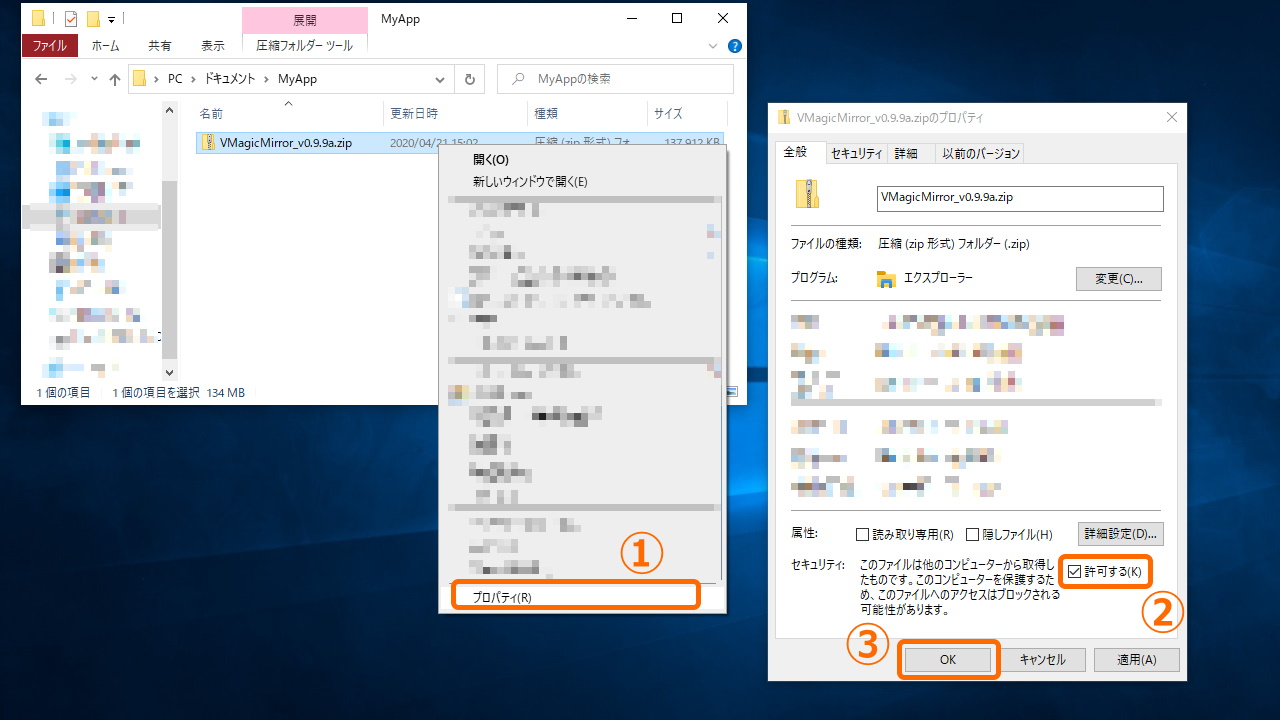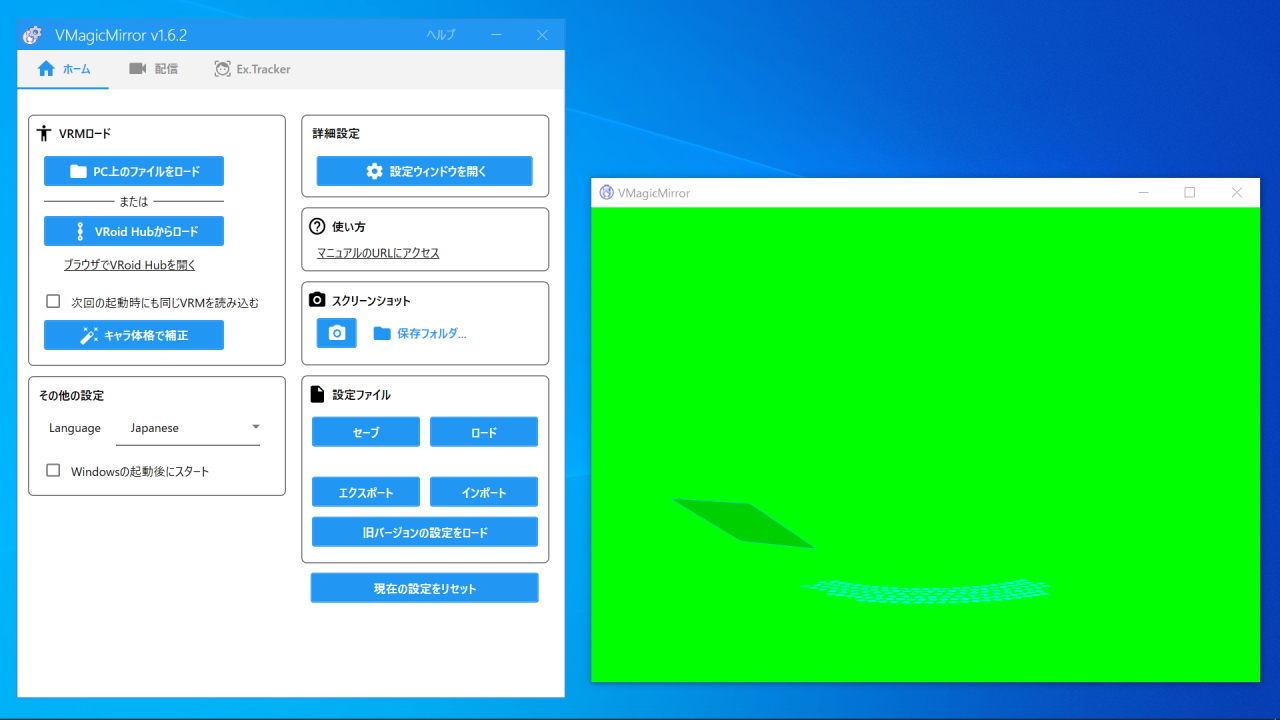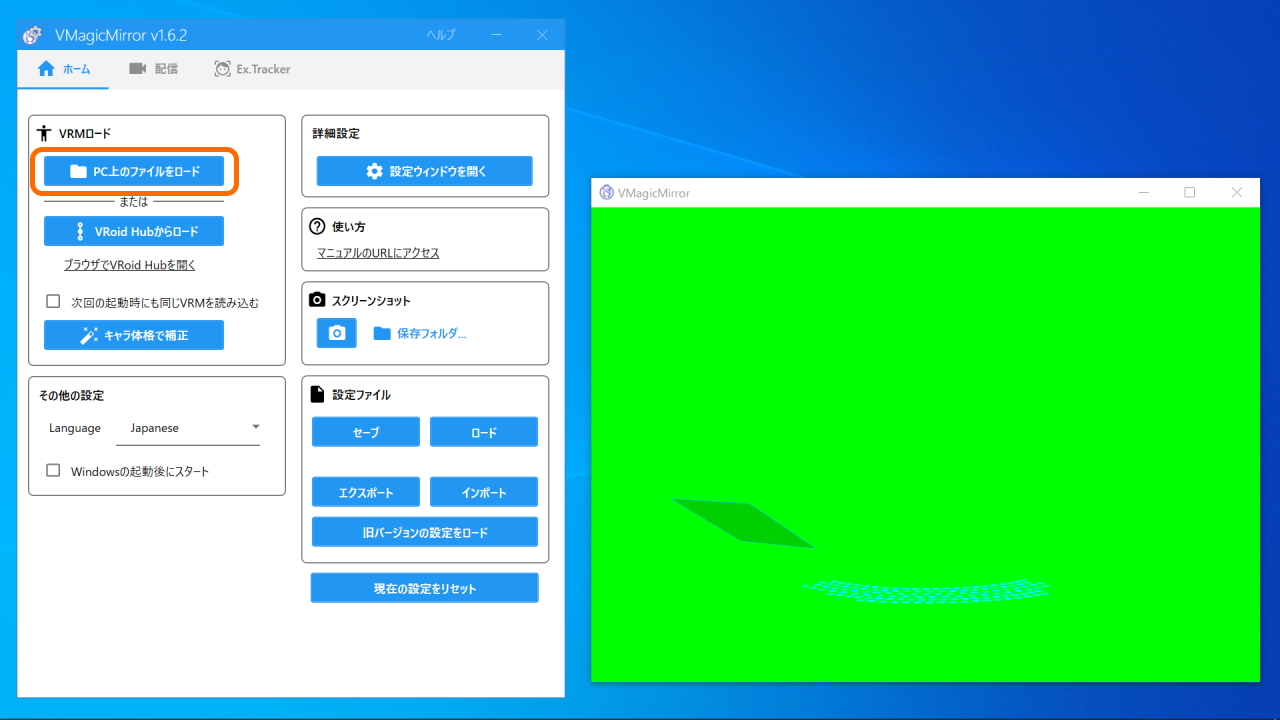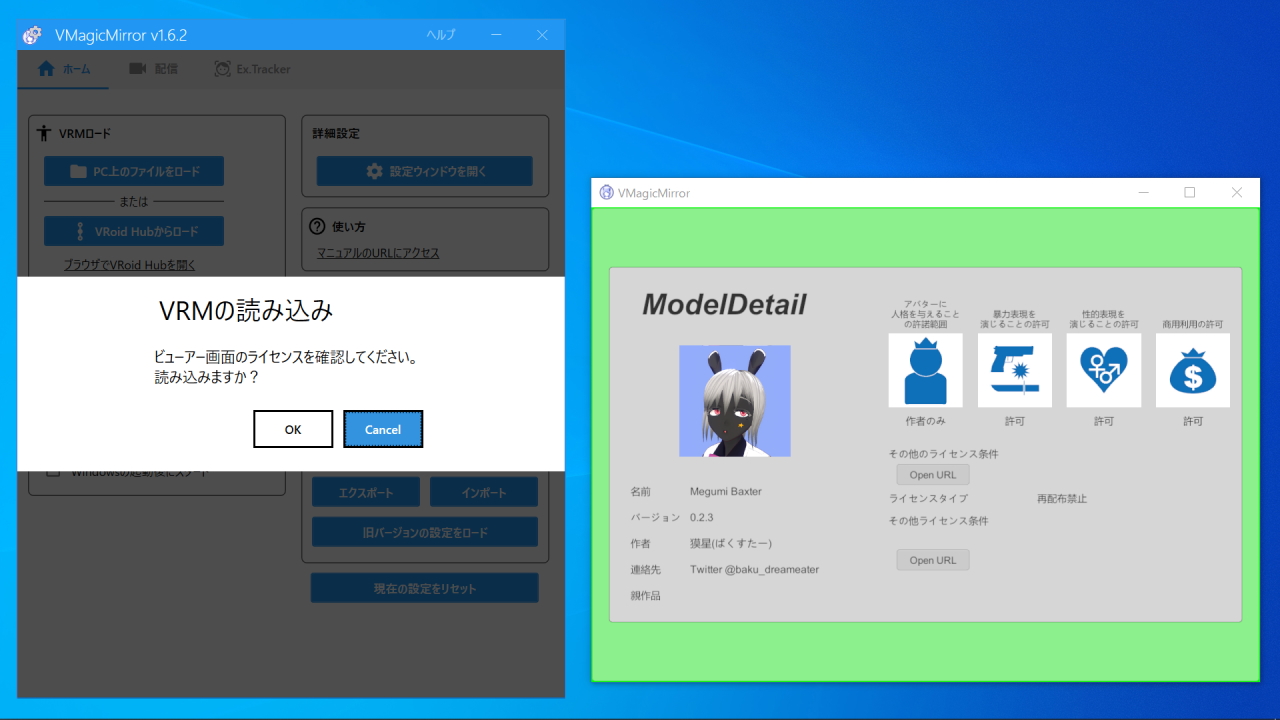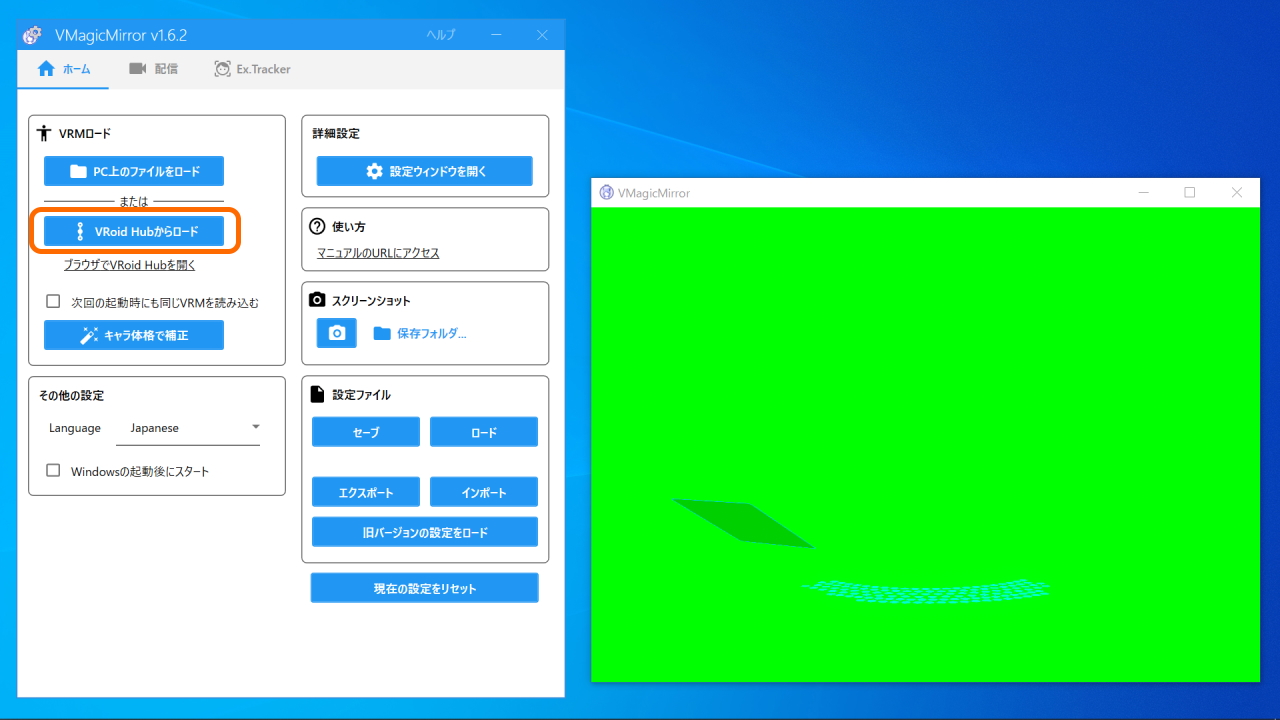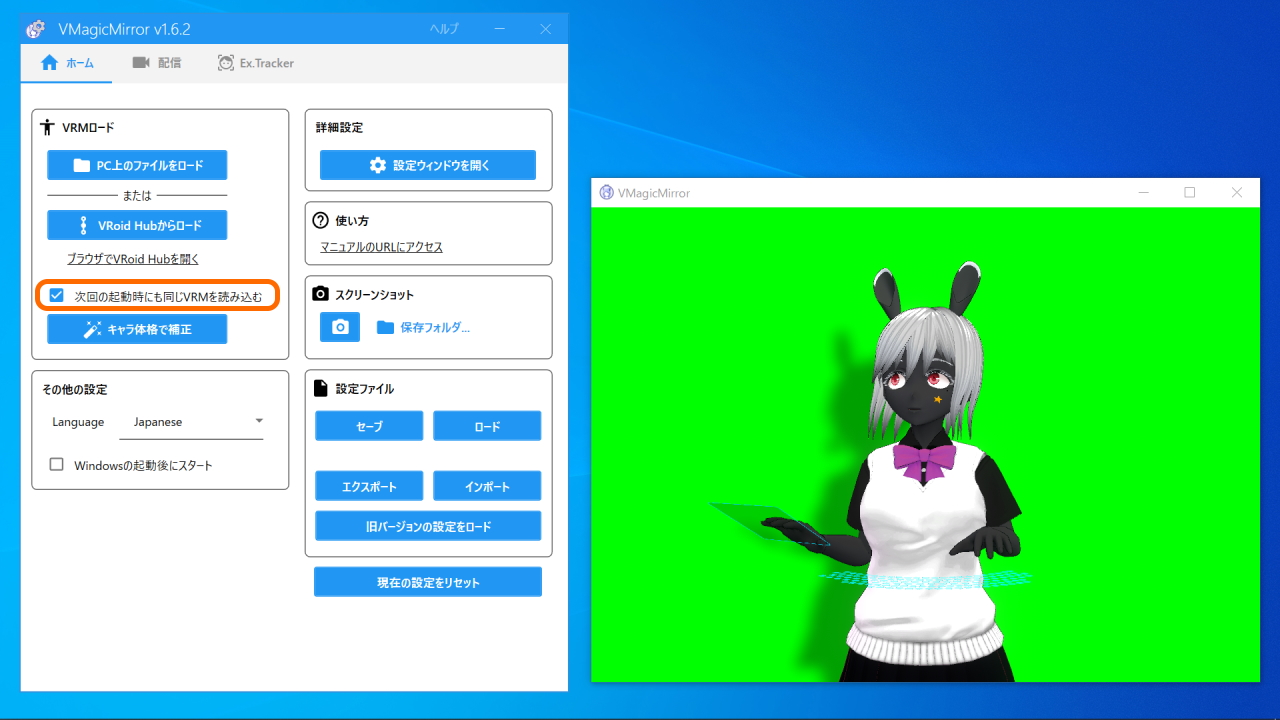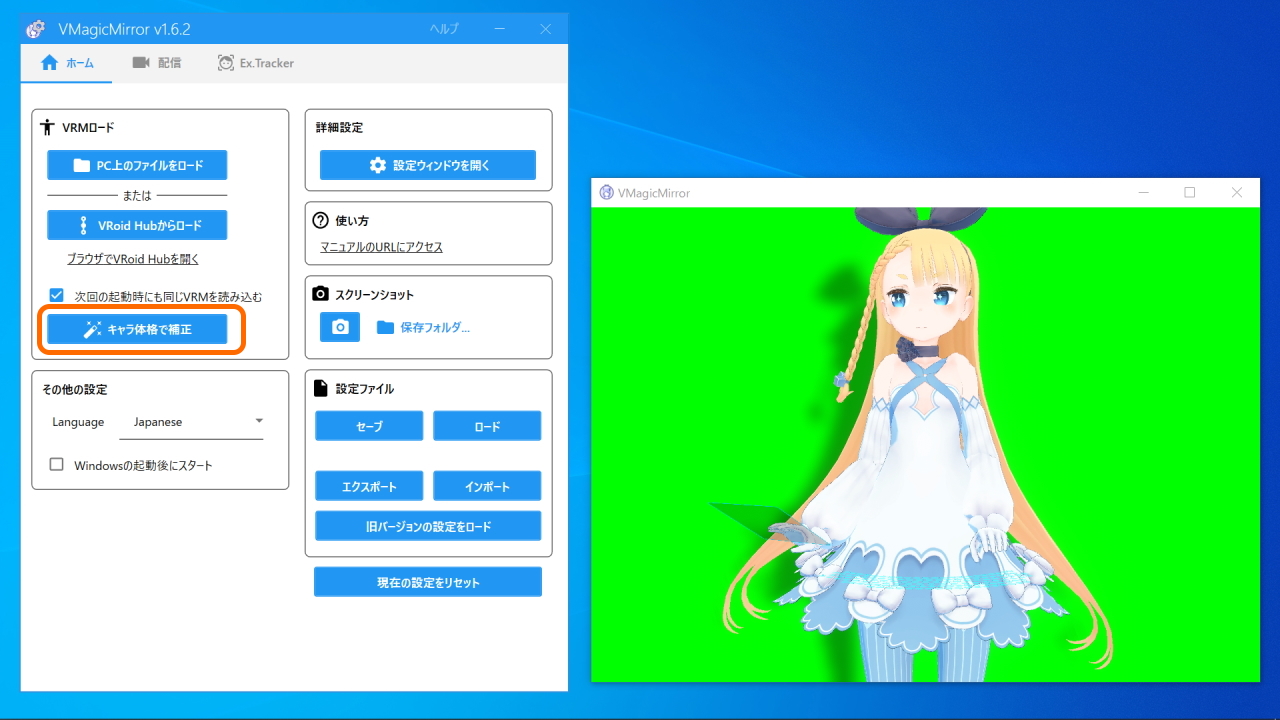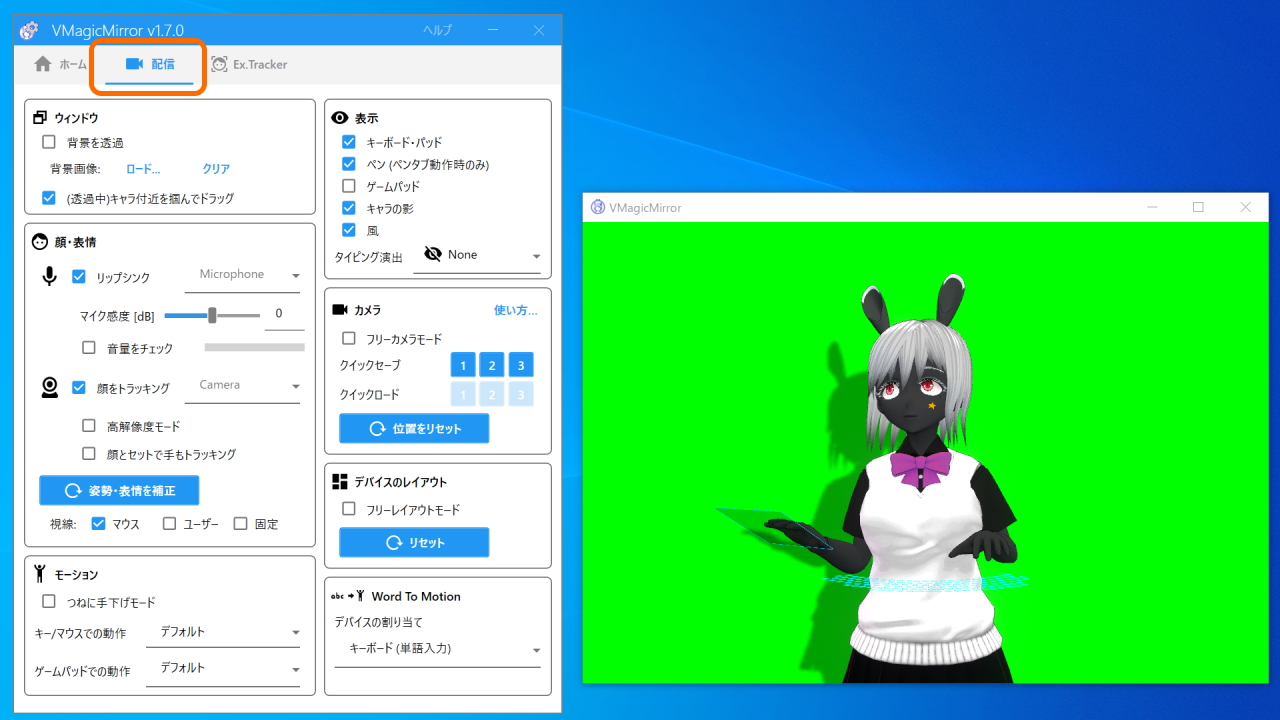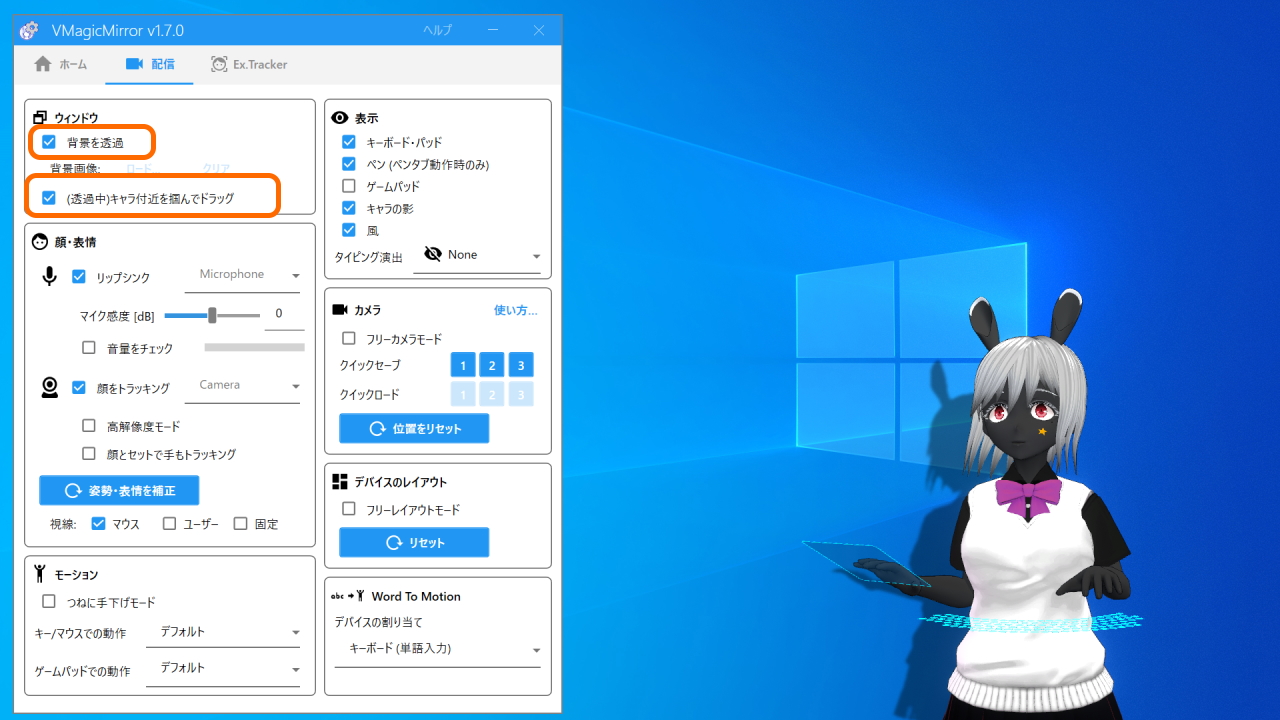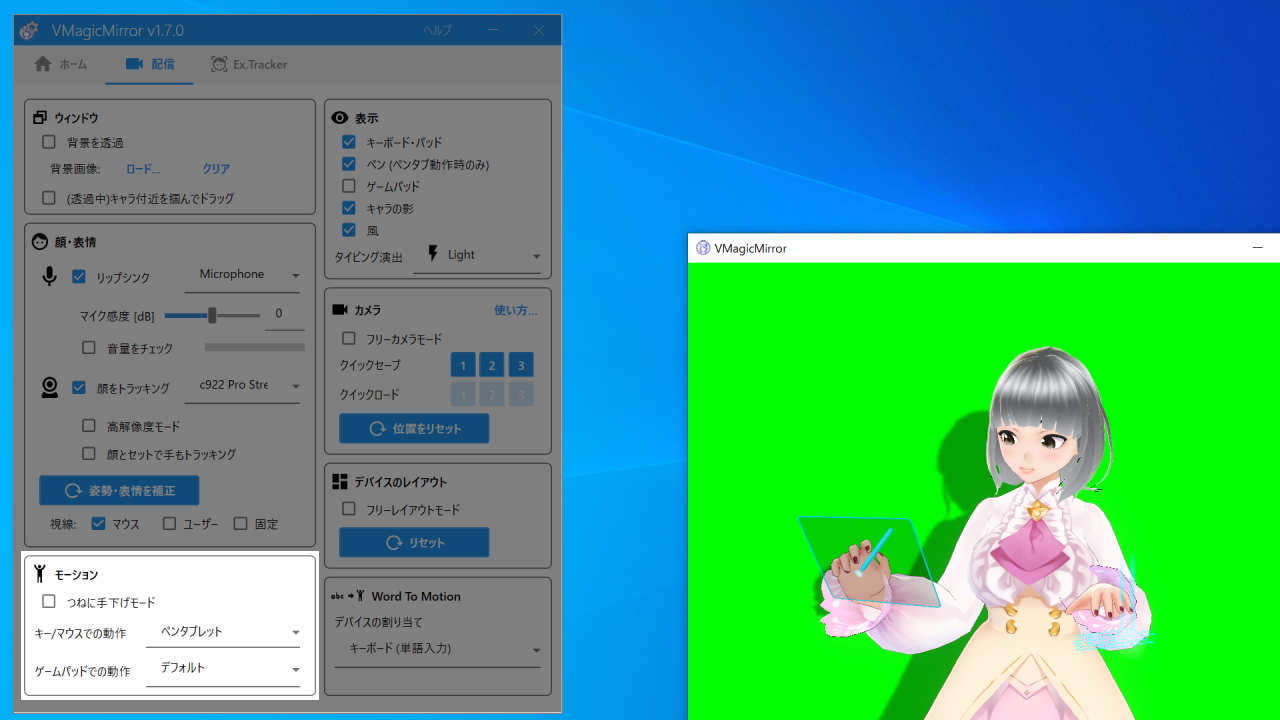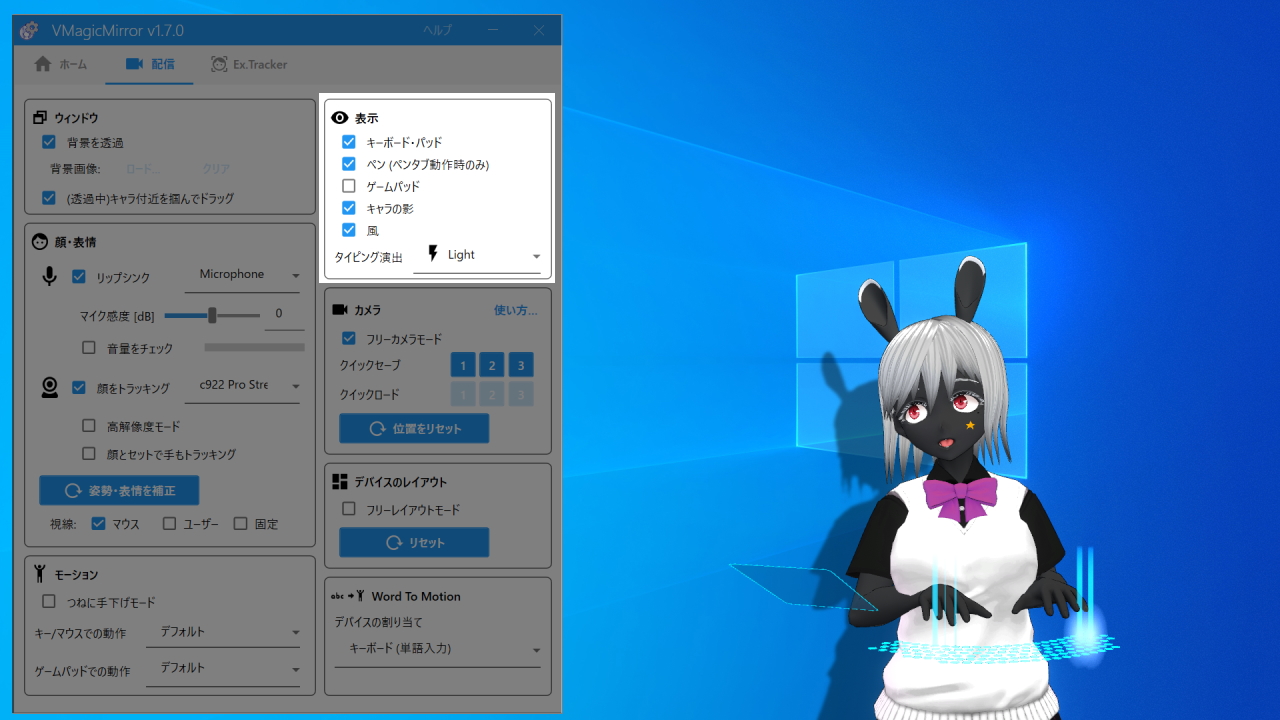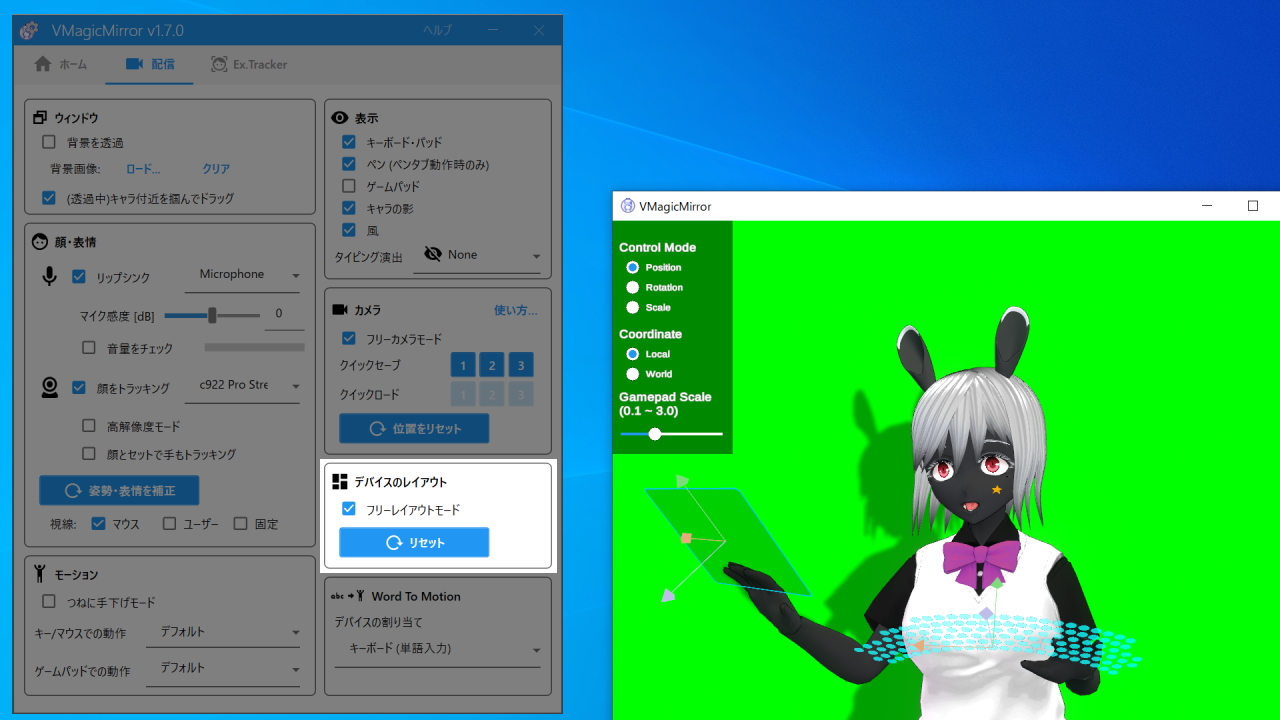Get Started
This page is about the basic usage of VMagicMirror after download.
This video also shows the setup process.
Note that, this video refers older version, so some GUI has changed.
Content
1. Start and Load Avatar
First step depends on the version of VMagicMirror you have.
Please see one of following sections 1-1. Start v1.9.0 or later version or 1-2. Start v1.8.2 or older version.
1-1. Start v1.9.0 or later version
Newer version of VMagicMirror is distributed with the form of installer (.exe) file.
Unzip the distributed file and run installer. After the installation, launch VMagicMirror from shortcut, or search in start menu to launch.
NOTE
Installer run might be blocked by Windows system. In this case, right click installer file (or zip file) and open Property to check whether Security area exists at the bottom. Check Allow and click OK to apply setting, then retry to run installer.
1-2. Start v1.8.2 or older version
Unzip the distributed file and start VMagicMirror.exe in the folder.
NOTE
If VMagicMirror.exe does not start correctly please check unzip settings. Right-click zip file to select Property, and check whether Security area exists at the bottom part. Check Allow and click OK to apply setting, then retry to unzip file.
Also please confirm the unzip folder is normal folder (like C:\ or My Document folder).
Please avoid special folder like Program Files, as those folder will lead tons of problem.
1-3. Load Model after Start
After the app started there appears 2 windows. One window shows GUI (“Control Panel”), and the other window shows avatar (“Avatar Window”).
When you close one of the window, the other window also closes and VMagicMirror quits. If you do not want to show control panel, then minimize it.
NOTE
If control panel window does not appear, it indicates install might not be successful.
See Download Troubleshoot in this case.
There are 2 ways to load avatar, from VRM file on the PC or from VRoid Hub.
To use the file on PC, click Load from File to select file. Confirm the license and click OK to load the avatar.
To use the model in VRoid Hub click Load from VRoid Hub, then avatar window will shows VRoid Hub loader UI, with authentication instruction in the first time.
After login, choose the avatar and check condition of use, then load.
NOTE
Some avatars by other authors are not available even if you liked it on VRoid Hub.
This is because of the usage limitation setting by the authors.
See the detail at Tips: Use VRoid Hub Avatar.
If you want to load the avatar automatically on next boot, then check Load current VRM on next startup.
Also, if your avatar is not shown correctly, try Adjust size by VRM button. You can more chances to fix the layout later.
2. Streaming Tab and Main Features
Streaming tab in control panel is to access all of main features of VMagicMirror.
2.1. Window
Turn on Transparent Window to make avatar window to transparent.
When the window is transparent and (When Transparent) Drag the avatar is turned on, you can left-click and drag to move the avatar.
If you do not want the dragging feature, then turn off Drag the avatar after placing your avatar.
Also you can set background image when Transparent Window is turn off, from Load button on BG Image.
2.2. Face
Face can setup your VRM’s face expressions.
LipSync: Select microphone to use LipSync (viseme) feature.Sensitivity [dB]: Specify plus value when the microphone input is too small, to obtain good result for lipsync.Show Volume: Turn on to see the input volume. AdjustSensitivitysuch that, the volume bar is green and sometimes red during talking.Track Face: Select webcam to track your head motion.
If the model’s face does not rotate in face tracking, please open FAQ and see “Face not rotate when using face tracking” section.
In Face Tracking tab more detailed settings are available. See detail at Face Tracking.
2.3. Motion
Motion menu support to custom how the avatar moves by user inputs.
You can select the reaction when using keyboard/mouse, and gamepad separately.
Also this menu has Hands-Down Mode check, which forces avatar’s arms always down. This mode also increases the body movement. In this mode the body movement increases slightly.
2.4. View
Toggle the checks to set which device is visible and which is invisible.
Especially you can see the effect when keyboard is shown and selecting Typing Effect to something not None.
Hint
If shadow looks bad, please check FAQ and “Shadow looks not good”.
If this does not help, then disable shadow.
2.5. Camera
This “Camera” means eyesight on the avatar window.
When you use this feature turn off Transparent Window first. Then, check Free Camera Mode to move the point of view.
Middle wheel: Move camera forward or backword.Right Click + Drag: Rotate eyesight.- In v2.0.1 or later
Alt Key + Left Click + Dragalso rotates eyesight.
- In v2.0.1 or later
Middle Click + Drag: Translate camera position.- In v2.0.1 or later
Shift Key + Left Click + Dragalso translates camera.
- In v2.0.1 or later
When you are confused where avatar is, press Reset position to recover the situation.
During this setup you can use Quick Save and Quick Load buttons to save or load the point of view.
Hint
There is another way to setup camera position, keeping Transparent Window on.
- Check on
(When Transparent) Drag Avatar - Left click the avatar
- Adjust camera position
- After adjusting, check off
(When Transparent)Drag Avatar
This is useful, but you will be more easily lost the avatar out of the window area.
In this case press Reset Position, or turn off Transparent Window to see the actual layout.
2.6. Device Layout
Turn on Free Layout to enter device free layout mode.
When enter this mode Transparent Window is turned off.
During this mode the control UI appears at the top-left corner of avatar window.
Control Mode: Choose which parameter to change, position, rotation, or scale.Coordinate: Choose the coordinate from device local, or world. If you are not clear about this, useLocal.Gamepad Scale: Adjust gamepad model size. If gamepad is too big for your avatar, then decrease this value.
Use Reset to recover the standard layout.
2.7. Word To Motion
Word To Motion is feature to control face expression.
In default, please try typing “joy” and see what results on your avatar. Also you can select Gamepad on Device Assignment and press A,B,X,Y buttons, or select Keyboard (num 0-8) and press keys to switch expresssions.
Please see the detail in Expressions.
When choosing Device Assignment to Gamepad or MIDI Controller, selected device arm motion is disabled. This helps you to hide what you do to change face expression from audience.
3. For further customize
The pages below documents more about VMagicMirror’s specification.

